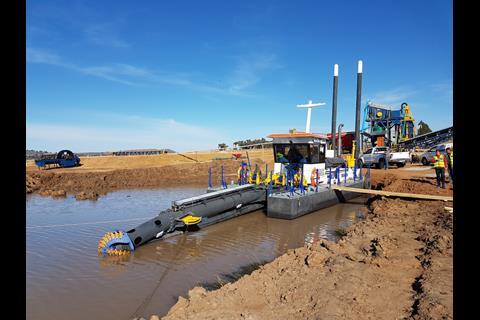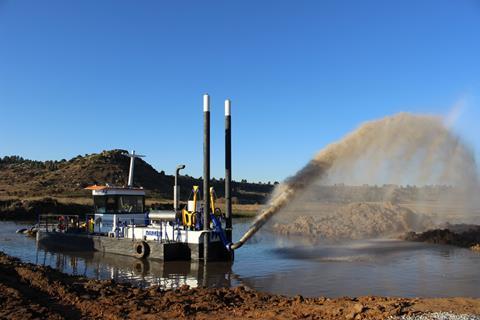Damen Shipyards Group has delivered a Cutter Suction Dredger (CSD) 250 to South Africa-based Dredging Africa. The CSD will be used to mine sand from the Ash River, just east of Bethlehem in the Free State Province. The project is a clear demonstration of the suitability of Damen’s stationary dredger range for dredging inland areas; the modularity of the equipment meaning it can be transported easily to even the most remote locations.
The client selected Damen for a number of reasons. Arend van de Wetering, Director of Dredging Africa, said, “We wanted to utilise the best equipment available, to be sure of the best production, reliability and lowest downtime. Ease of transport and commissioning were key for us as were sound after-market support and Damen’s offering met all of these requirements.”
“Most dredging projects in South Africa are small to medium sized, generally involving dredging to depths of no more than 5 metres. The CSD can dredge to 6 metres and is compact and easily transportable by road. Just what the doctor ordered!”
The CSD will dredge fluvial sand deposits from a 64ha location in the Ash River into the washing and screening plant of Bethlehem Quality Sand. The sand will be used in the construction industry.
The dredger has the capacity to extract and pump some 1,000 m3 of mixture per hour. The floating pipeline, with an internal diameter of 250 mm, will start at just 100 metres in length. It connects to a 50 m land line which is directly connected to the sand classification plant. The plant can process 150 tonnes per hour; the excess material is dumped on a reserve stockpile. As the project develops, the mining dredger will gradually move away from the classification plant. This is no problem as more floating pipeline can be added; no booster station is required.
Mr Van de Wetering summed up, saying, “Dredging Africa wanted to go to the next level in dredging in Southern Africa and Damen assisted us in realising this development. This is the first state-of-the-art-












